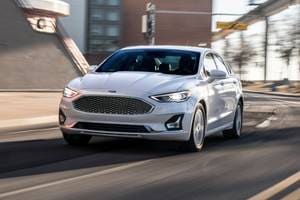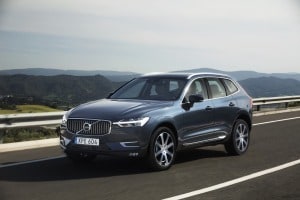Cash Is King, And Big Three Hope To Reign Long

Of all the hopeful markers of their renaissance, the cash stockpiles now being nurtured by General Motors Co. and Ford Motor Co. may be the most indicative of all. Because of their quick swing back to profitability in the wake of the GM and Chrysler Group LLC bailouts, wide-ranging reductions in structural costs, layoffs of thousands, union concessions and a fledgling global recovery, the Detroit Three — and their respective balance sheets — are in the best position in decades to bring renewed financial resources to bear in ways that will make a long-term difference. But the flush coffers they're currently building represent at best a once-in-a-generation opportunity for leadership to get things right for good — to invest or retain it in just the right amounts, on just the right projects, with just the right measures of constraint and confidence, of diversity and uniformity.
GM generated third-quarter profits of $1.7 billion and posted profits of $4.7 billion for all of last year, after recovering from a $31-billion loss in 2008 before its federal bailout. Similarly, Chrysler's adjusted net income in 2011 has measured $509 million after reporting a net loss of $3.8 billion for the second half of 2009 alone. Ford had a 2008 net loss of $14.8 billion before posting 2010 profits of $6.6 billion and another $6.6 billion in gains so far this year. Each company also has accumulated a significant amount of cash during the last couple years of auto-market sales recovery, lowest costs, and a benign environment for sales incentives: GM stood with $33 billion in cash at the end of the third quarter, Ford with $21 billion and Chrysler with $9.5 billion.
Exactly where they proceed from here with those cash caches still is largely up in the air and has been made even more indeterminate by the recent shakiness of the U.S. economic recovery and by the eurozone difficulties in Europe. Those travails already recently have resulted in the downgrading of most sales forecasts for the American market for all of 2011 and for next year to boot. But ensconced in their most comfortable long-term financial positions perhaps since the halcyon days of the Seventies, Big Three financial executives have been making it clear that they don't plan on doing anything precipitate — or even anything with a short-term focus. Ford, though, did make the move this week of reinstating dividend payments for shareholders of common stock. It signals the automaker's position that, after more than five years, shareholders need to be cut back in on Ford's improving profitability.
Financial Checks
Then there's GM. "We want to have a fortress balance sheet, so that we can invest in our future product portfolio, and consistently through the cycle," Dan Amman, GM's chief financial officer, told a recent conference call of analysts and journalists. "Our history before, when times got tough, was to cut back investment in the future, and that has cost the company dearly in the past. Now we want to invest in a straight line into the future, whether the economy is up or down. And we want to be in position to withstand any kind of external shock that comes along. And beyond that, ultimately, we want to return cash to shareholders."
For GM, the labor-cost-friendly new deal with the United Auto Workers union is only the latest positive result. The company has spent much of the two years after the bailout continuing to trim costs and ramp up efficiencies by beginning to consolidate more operations and vehicle platforms across functional and geographic lines. The company has managed to boost pricing because of rising demand for its most fuel-efficient models, hold the line on incentive spending and maintain a significant, if recently reduced, cadence of new products — a pipeline that Amman noted will be picking up again with "some exciting and significant launches coming into the market in the next several quarters," including the all-new 2013 Chevrolet Malibu. As David Leiker put it, "For the last 10 to 15 years, the writing was on the wall for them, and they lost money at a very high level of market demand." The auto analyst for Robert W. Baird & Co. added, "Now, at a much lower level, they're making money. There's a viability aspect to the business today that is the biggest issue."
GM, of course, is still constrained by some short-term debt and the long-term requirements of continuing to feed the United Auto Workers union-controlled pension fund that comprised a way for the automaker to offload an onerous structure for its legacy liabilities in the 2007 labor pact. There's also the matter of the federal government's selling its remaining 26.5-percent stake in GM before CEO Dan Akerson and his team is fully free to deploy GM's increasingly ample capital as they please. The GM management team could go a number of ways. Company executives have said they would like to get down to zero debt within a couple of years. They'd like to expand again in the auto-financing business; last year the company acquired subprime lender AmeriCredit. GM could buy back shares from existing shareholders, which also could serve to make its shares more valuable whenever the U.S. Department of Treasury elects to sell off all or a portion of its 26.5 percent of GM.
Some Things Ventured
GM also is willing to take some interesting chances with a portion of that capital. That includes $100 million in GM Ventures, a venture-capital fund it is using to invest in startup companies that could create new technologies to give GM a competitive edge in vehicles. "We're willing to take these risks, and we go in knowing nine out of 10 of these will fail," Vice Chairman Stephen Girsky said a few months ago. Yet, said Mary Beth Stanek, the goal is to take full advantage of the 10 percent that turn out successfully. "Competitive advantage always lies with those who have the ability to take a very good technology and commercialize it to scale at an affordable rate," said GM's director of federal environmental and energy regulatory affairs. "That's where our focus is."
Already, it seems, GM Ventures has taken the company into some envelope-pushing bets. As recently as four years ago, the "old" GM was still in the business of seeding advanced technologies outside the company with little hope of immediate return; that's how it ended up investing in two cellulosic-ethanol startups, Coskata and Mascoma, for instance, that remain some distance from producing commercial fuels. Nowadays, one of GM Ventures' "green" investments is a $7.5-million commitment to Sunlogics, a manufacturer of solar panels that plans to move to Michigan and hire 200 employees. Given the recent scandals attending Solyndra and other solar-panel makers in the wake of federal-government loans and a shakeout of startups in a tough business environment, that's one by GM that bears close watching.
Overall, it's not as if the days of financial free-for-all have returned for GM, or for Ford and Chrysler. Each remains more dependent for profits on pickup truck sales than probably is good for a long-term future in which fuel efficiency will play an even greater role. The competitive picture is sure to get more stressful in the U.S. market than it has been this year, even with potentially rising sales volumes. And the global economy remains balky and overexposed from China to Europe to North America. "GM still needs to conserve cash given the weak global economic conditions and its own weak European operations," said Richard Hilgert, auto analyst for Morningstar. "So they're not going to be able to do a lot else with it at this point. They still have to reinvest in the business. And their R&D spending is still only running at about 4.5 percent of sales; I'd like to see that come up a bit more."





